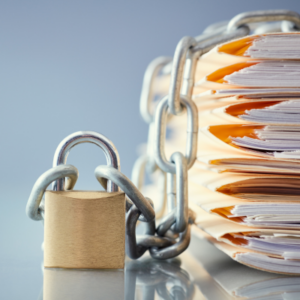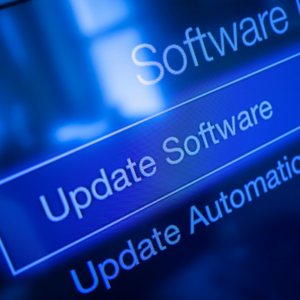In today’s digital age, securely sharing sensitive information is crucial for maintaining the integrity and trust within any boardroom.
Board members and councillors often handle confidential documents and sensitive data, making secure document sharing an essential part of good governance. With increasing cybersecurity threats and regulatory demands, ensuring that sensitive information remains protected is not just a matter of compliance—it’s a responsibility.

We’ve outlined best practices for secure document sharing among board members.
Following these guidelines will ensure your sensitive documents stay secure,
while enhancing your board’s cybersecurity position and reinforce your
commitment to data protection.
8 best practices for secure document sharing:
1. Establish clear document management policies
Clear document management policies are essential for ensuring that all board members understand their roles and responsibilities when handling sensitive information. Outline procedures for document storage, sharing, and deletion, and make sure everyone is aware of how to handle various types of data securely. Periodically reviewing and updating these policies can also ensure that they stay relevant with evolving security standards.
2. Utilise a secure digital platform
Traditional email or paper-based document sharing simply does not provide the level of security required for sensitive boardroom materials. Paper documents are inherently insecure and can easily be lost, stolen, or inadvertently viewed. Emails are no better and can be accidentally sent to the wrong recipient or forwarded without permission, leading to unintended data exposure. Once an email is sent, there’s limited control over who can access it.
Utilising a secure digital platform specifically designed for board governance, like Stellar Secure Business Platforms, ensures that documents are encrypted, access-controlled, and easily auditable. Secure platforms often include built-in features like two-factor authentication and role-based access control, providing an extra layer of protection. Learn more about Stellar’s features here.
3. Implement role-based access controls
Not all board members require access to every document. By assigning permissions based on roles, you limit access to only those who genuinely need it. This reduces the risk of unauthorised access and helps maintain control over sensitive information. With a role-based access model, board members can focus on documents relevant to their roles, ensuring efficient and secure handling of data.
4. Enable two-factor authentication (2FA)
Two-factor authentication adds an additional security layer by requiring users to provide two forms of identification before accessing documents. This could include a password and a verification code sent to a mobile device. It’s a critical tool in the armoury of identity and access management. Ensuring that a simple username and password aren’t the only gates guarding your sensitive information.
According to Microsoft, multi-factor authentication stops 99.9% of credential-based attacks.
Yes, it can intially be annoying to do – however it is nothing in comparison to having your data and personal information stolen. By enforcing 2FA, you can significantly reduce the likelihood of unauthorised access, even if a password is compromised. It’s a no-brainer.
5. Use end-to-end encryption
End-to-end encryption ensures that data is encrypted when sent and remains encrypted until it reaches the recipient. Only the sender and the recipient can access the content, preventing unauthorised parties—including service providers—from viewing the information.
Stellar provides end-to-end encryption, guaranteeing that your data remains private and secure during transit.
6. Monitor and audit document access
Tracking document access and usage is crucial for maintaining accountability and detecting any suspicious activity. Board portals, like Stellar provide audit trails that log who accessed a document, when it was accessed, and any actions taken on it. Regularly reviewing these logs can help identify potential security threats early and ensure compliance with data protection regulations.
7. Conduct regular cybersecurity training
One of the most effective ways to mitigate cybersecurity risks is to educate board members on potential threats and best practices for secure document sharing. Regular training can help board members recognise phishing attempts, understand the importance of secure passwords, and stay updated on the latest cybersecurity threats. By fostering a culture of security awareness, you empower your board members to be the first line of defence against data breaches
8. Regularly update software

Keeping software up to date is critical for maintaining security.
Cybercriminals often exploit vulnerabilities in outdated software, so it’s essential to apply updates as they become available. Keeping your software up to date can also enhance existing features, patch security flaws, add new security features, fix bug issues and improve performance for devices.
Stellar prioritises regular updates, to ensure that your board’s document-sharing tools are protected against the latest threats.
Final words on secure document sharing
Secure document sharing is essential for effective and responsible governance. By implementing these best practices, you can enhance the security of sensitive information within your boardroom, protect your organisation from potential data breaches and demonstrate a proactive approach to data protection.
Stellar Secure Business Platforms offer a comprehensive suite of tools designed specifically for the needs of board members and councillors, providing peace of mind with industry-leading security features and an intuitive, user-friendly interface. With a commitment to best practices and ongoing innovation, Stellar is here to help you navigate the complexities of secure document sharing with confidence.
Ready to elevate your board’s security? Get in touch here.

